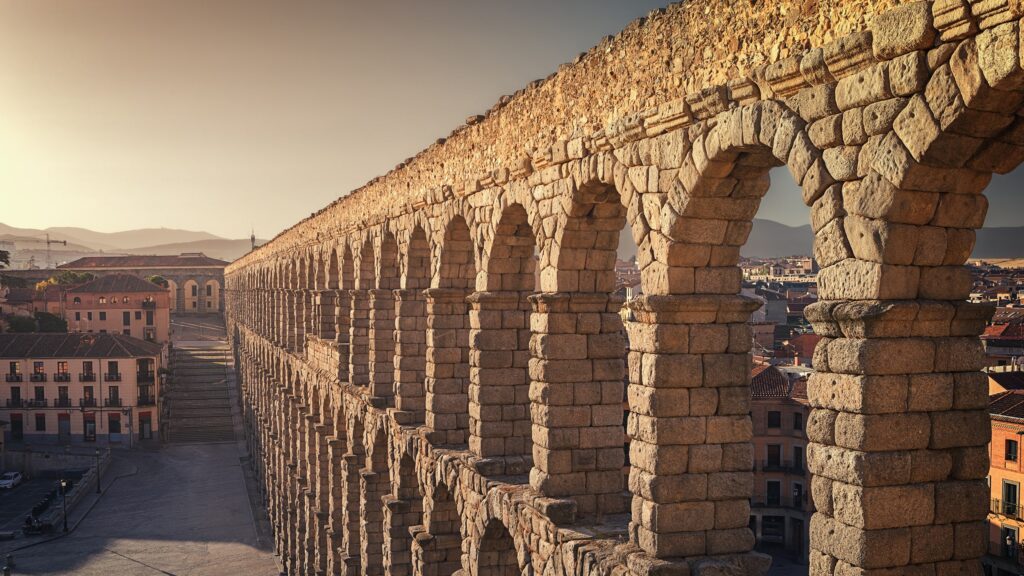Introduction
Segovia Aqueduct is one of the most remarkable engineering achievements of the ancient Roman Empire. Located in the city of Segovia, Spain, this impressive structure is over 2000 years old and stands as a testament to the genius of Roman engineering. Dating back to the 1st century AD, the Segovia Aqueduct is an impressive structure, standing at over 28 meters tall and spanning 818 meters in length. Its impressive arches span the city, providing a majestic sight and a reminder of the ingenuity of the Roman Empire. In 1985, the Segovia Aqueduct was declared a World Heritage Site, making it a must-see for any traveler visiting the region.
History of Segovia Aqueduct
The Segovia Aqueduct is a testament to the engineering prowess of the Roman Empire and the skills of its builders. Built in the early 1st century AD, the Aqueduct was constructed to transport water from the nearby Rio Frio river to the city of Segovia, a distance of some 15 kilometers. The Aqueduct is composed of over 20,000 granite blocks, held together without the use of mortar and featuring over 160 arches. The structure is impressive, standing 28 meters tall and 818 meters long.
The Construction of The Aqueduct
The construction of the Segovia Aqueduct was no easy feat. The structure was built without the use of mortar, instead relying on the precision of the stones used in its construction. Each of the 20,000 granite blocks was carefully cut and placed, held together by gravity and the skill of the builders. It is believed that the Aqueduct was built by slaves, sent by the Roman Emperor Trajan to construct the structure.
The Design of the Aqueduct
The Segovia Aqueduct is an impressive structure, standing at 28 meters tall and 818 meters long. The structure consists of two levels, with the higher level featuring over 160 arches and the lower level featuring double arches. The Aqueduct is also decorated with various carvings and sculptures, including a large eagle at the top of the structure.
Segovia Aqueduct Today
Today, the Segovia Aqueduct is a major tourist attraction in the city of Segovia, drawing thousands of visitors each year. The structure is still in remarkably good condition, despite being over 2000 years old. In 1985, the Aqueduct was declared a World Heritage Site and is now one of the most visited sites in Spain.
Conclusion
The Segovia Aqueduct is an impressive engineering feat and a reminder of the ingenuity of the Roman Empire. Built in the 1st century AD, the Aqueduct is an impressive structure, standing at 28 meters tall and 818 meters long. The Aqueduct is still in remarkably good condition, despite being over 2000 years old and is now a major tourist attraction in the city of Segovia, drawing thousands of visitors each year. A visit to the Segovia Aqueduct is a must for any traveler visiting the region and a chance to see a remarkable engineering feat from the Roman Empire.

